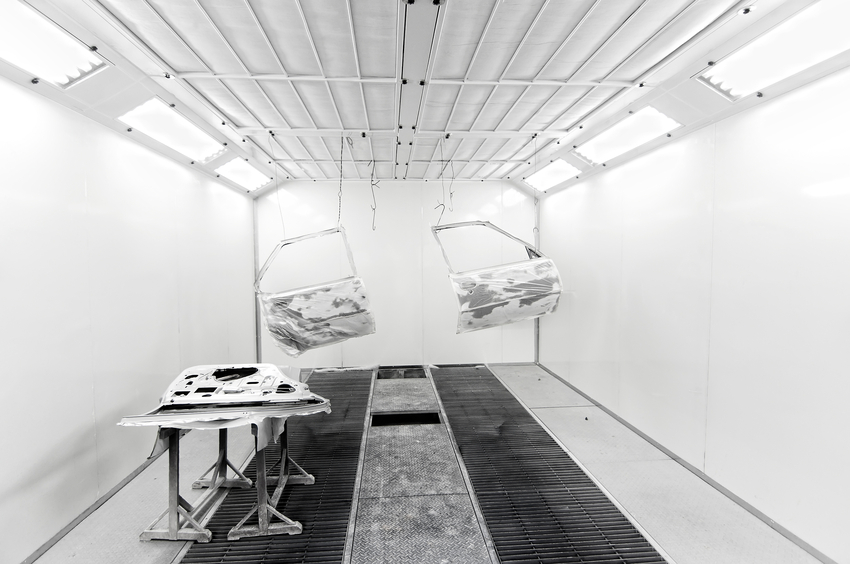A spray booth is a vital part of any operation that involves routine spray painting of parts or products. Spray booths improve the quality and consistency of spray-finishing operations, and they improve worker and facility safety as well as environmental compliance.
 |
Here’s what you need to know about Occupational Safety and Health Administration (OSHA) compliance and spray booth operations.
In the Booth
According to a 2008 letter of interpretation, OSHA’s ventilation standard (29 CFR 1910.94) requires all spray-finishing operations that involve the use of a potentially hazardous chemical to be performed within a spray booth or spray room. “Hazards,” according to OSHA, includes both the flammable solvents that many spray coatings use, as well as finishing components that are potential health hazards—although respirators are generally required to protect operators against health hazards inside the booth.
Standards for spray booths and spray-finishing operations are found not only in 1910.94 but also in 1910.107, Spray Finishing Using Flammable and Combustible Chemicals. Those standards require:
- Nonflammable construction. Spray booths must be made of steel, concrete, or masonry (with limited exceptions for low-volume spraying), with noncombustible coatings on floors and working areas.
- Easy-clean interiors. The inside of a spray booth should be smooth and continuous so that it will be easy to clean. Baffle plates used to control air flow within the booth must be readily accessible, easily removable, made of noncombustible material, and easy to clean on both sides.
- Deflectors. For spray booths constructed with an open face of 9 square feet (sq ft) or larger, a metal deflector or curtain at least 2½ inches deep must be installed along the top edge of the opening.
- Minimal openings. Aside from the work face, openings into the booth—for example, to accommodate conveyors—should be as small as practical.
- Isolation. Spray booths must be surrounded by a clear space of at least 3 ft, in which no materials storage, other equipment, or other spray booths are located. As an alternative, employers may use nonflammable partitions. Open flames or spark-producing equipment must be located at least 20 ft from any spray-finishing operation or booth. Lamps that are more than 3 ft away but less than 20 ft away must be fully enclosed and protected from damage.
- Fixed lighting. Spray booth lighting must be designed to minimize fire hazards, including electrical hazards and conductive heat hazards.
- Safe equipment and wiring. Equipment and wiring used in spray booths, including electrostatic spraying apparatuses; drying, curing, and fusion apparatuses; automobile undercoating operations; and powder-coating equipment, must meet electrical and other safety standards intended to prevent fires.
- Grounding. All metal parts of spray booths, exhaust ducts, and piping systems that carry flammable liquids or aerated solids must be grounded.
One major purpose of a spray booth, of course, is to make sure that flammable and toxic vapors are captured and safely dealt with so that ventilation and fire suppression are extensively addressed in the standards.
Ventilation must remove all flammable residues and must be in operation at all times when the spray booth is in use, as well as afterward, until the vapors from drying objects and from residues are removed. Every part of the ventilation system, including fans and ducts, must be noncombustible and nonsparking. Like the baffles, the parts of the ventilation system must be accessible for cleaning. Makeup air intakes must be adequate, and exhaust air must not be recirculated.
Sprinklers are the preferred method of fire suppression in a spray booth, but if they are not available, other extinguishing methods must be provided.
Tomorrow we’ll look at what happened when an employer’s sprinkler booth fell afoul of OSHA inspectors.
